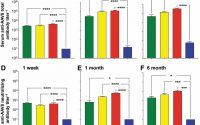Maryland’s hospital payment reform fails to deliver
An experiment in Maryland designed to save health care dollars by shifting services away from expensive hospital-based care and toward less costly primary, preventive and outpatient services has yielded disappointing results.
These are the findings of two separate studies led by investigators from Harvard Medical School and the University of Pittsburgh. One study will be published in the April issue of Health Affairs, the other one appears in the February issue of JAMA Internal Medicine.
Maryland’s program was rooted in the idea that paying hospitals a fixed global budget—rather than for each patient admission—would deter unnecessary admissions and provide better care outside of the hospital. Under this program, hospitals that saved money by reducing admissions would keep the savings. If hospitals exceeded their budgets, they would absorb the resulting costs.
“There is widespread interest in moving to alternative payment models that contain health care spending while still ensuring robust health outcomes,” said study lead author, Eric Roberts, an assistant professor at the University of Pittsburgh Graduate School of Public Health. “Unfortunately, with the Maryland experiment we didn’t find meaningful changes in care that policymakers had hoped this program would achieve.”
Maryland’s program was implemented in two waves: the first among rural hospitals, and the second among the remaining hospitals in the state. The two studies examine each phase in turn.
In the Health Affairs study, the researchers compared patterns of use and spending among Medicare beneficiaries served by rural Maryland hospitals with global budgets to patterns among patients served by a group of nonparticipating hospitals. After three years, the researchers found no reductions in hospital use or spending that could be linked to the global budget program.
In their JAMA Internal Medicine study, the researchers focused on the first two years of Maryland’s state-wide rollout of the program, which included larger hospitals serving urban and suburban areas of the state. This study found no evidence that the global budget program was associated with reductions in hospital use or increases in primary care visits.
“When we drilled down into our data, we did not find any evidence that patterns of hospital and primary care use changed in Maryland relative to similar areas unaffected by the program,” said Ateev Mehrotra, associate professor of health care policy and medicine at Harvard Medical School and a hospitalist at Beth Israel Deaconess Medical Center.
So what went wrong? One possibility is that the disappointing results may stem from complicated administrative logistics, the authors said. Also, they said, the policy changed only the way hospitals are paid, while payments to individual physicians were kept out of the budget and remained on a fee-for-service basis.
“The latter could be a big deal,” Mehrotra said. “If the physician is not on board, the hospital doesn’t have much control about the day-to-day decisions about how care is delivered.”
Identifying alternatives to the current payment model is important to help alleviate the nation’s health care spending problem, the team added.
“We believe that payment reform is critical, but we need to carefully evaluate which payment models are most effective,” Mehrotra added.
The researchers emphasize that Maryland’s new payment strategy still might have saved money for the state and Medicare. However, any savings did not come from changing the care that Maryland residents received, but rather from changes to hospital prices.
Source: Read Full Article


